Summer Camp – Navjeevan CBSE Academy(Sikar)
Navjeevan CBSE Academy, Sikar is a co-educational, day-boarding school affiliated with the CBSE curriculum. Established in 2007 by the Navjeevan Science Group, the academy has grown into a modern educational institution known for its student-centric approach.
From April 1st, 2025, Navjeevan CBSE Academy, Sikar has proudly collaborated with I-KIT LAB to create an inspiring transformation turning the school into an IT Hub for Little Scientists. Through STEAM-based education (Science, Technology, Engineering, Arts, and Mathematics), students are now exploring concepts with creativity and innovation inside a fully equipped lab.
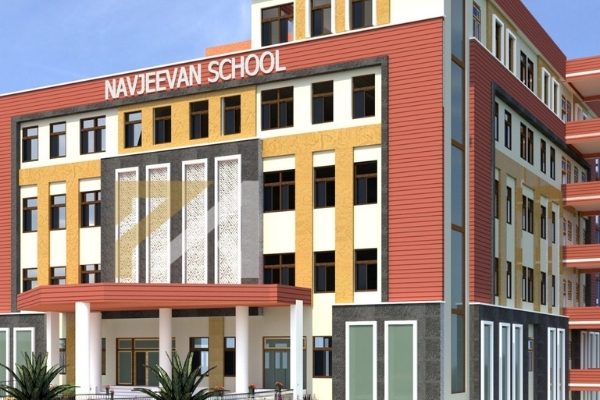
Meet the Educators, Engineers & Explorers of I-KIT STEAM Lab
The I-KIT STEAM Lab operates under the expert guidance of Mr. Aakash and Mr. Bhupendra (Instructors), Mr. Rajan (mentor), and Mr. Rahul (Subject Matter Expert). All four are highly qualified engineers (B.Tech & M.Tech) with strong technical expertise in STEAM education, Mechatronics, Artificial Intelligence, and Robotics. With their rich industry experience, they not only guide students technically but also inspire them to ask thought-provoking questions, explore new ideas, and turn imagination into scientific innovation.
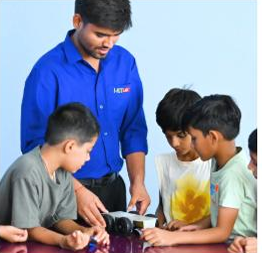
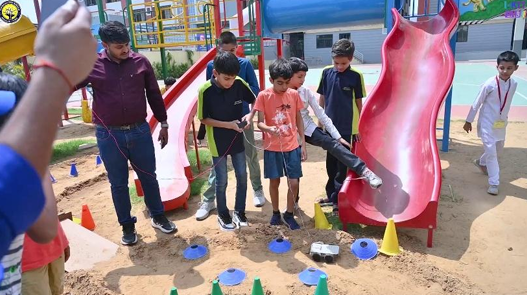
Discover. Connect. Innovate – Student Clubs at I-KIT Lab
At I-KIT STEAM Lab, students are guided based on their interests and learning styles. They join innovation clubs that match their strengths, helping them build skills, explore ideas, and solve real-world problems through teamwork and creativity.

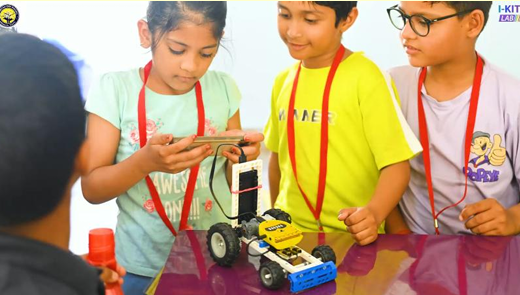
Innovation Clubs at I-KIT Lab:
- Charak – Focused on Biotech & Medical Science
- Garud – Focused on Automobile & Aerospace
- Humpi – Focused on Smart Infrastructure Innovation
- Earth – Focused on Agro & Environment Innovation
- Paramanu – Focused on Energy Innovation
A Glimpse into the Action – Summer Camp May’2025 at Navjeevan CBSE Academy –
The energy inside the I-KIT Lab during the summer camp was electrifying. Students explored the world of robotics, electronics, and creativity under expert mentorship all captured in this exciting glimpse below.

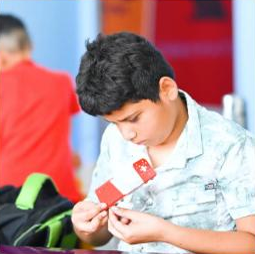
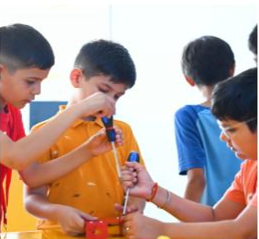
Navjeevan CBSE Academy turned into a vibrant celebration of learning, laughter, and innovation! From coding robots to creating art with machines, every session was filled with curiosity and excitement. Students explored STEAM concepts hands-on in the I-KIT Lab, discovering the joy of science and technology without fear. Whether it was drawing with a robot, racing self-built cars, or solving puzzles with logic and creativity the smiles on their faces said it all. The camp became a launchpad where imagination took flight, and every child felt like a young scientist at work!
Project Highlights – Summer Camp, I-KIT(STEAM) LAB, Navjeevan CBSE Academy –
DrawBot Magic – PeeCee Pocket-powered drawing robot blending art & code
Activity Setup
- A drawing robot was prepared using a PeeCee Pocket (portable coding computer) and basic robotics components.
- Color pens were attached to the robot to make it a “DrawBot” that can sketch patterns while moving.
- The robot was placed on a large yellow sheet, becoming its drawing canvas.
Learning Objectives
- Introduce students to coding logic (sequence, loops, inputs).
- Demonstrate the practical application of sensors and robotics.
- Encourage artistic expression through technology, combining engineering and creativity.
- Make coding visually interactive and fun, especially for younger learners.
Student Engagement
- Students watched keenly as the robot moved across the sheet, following the logic programmed into it.
- They observed how code controls movement, speed, and direction.
- Many students asked thought-provoking questions like:
o “How does the robot know where to go?”
o “Can we change the color or direction?”
o “What if we give it a different command?”

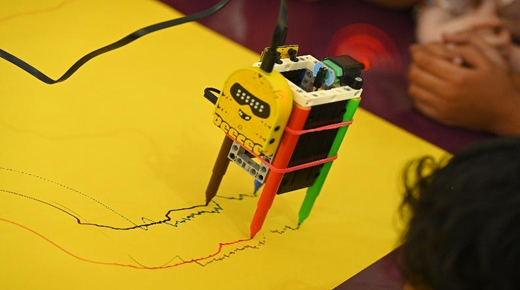
Mentor Involvement
- Mentors guided students through the coding process step-by-step using a user-friendly block-based
coding platform on the PeeCee Pocket. - Emphasis was given on trial-and-error, helping students test and tweak their code.
Skills Developed
- Logical thinking and algorithmic mindset
- Team collaboration and observation
- Basic robotics and programming understanding
- Art-tech fusion awareness (STEAM model in action)
Excitement & Outcome
- Students were thrilled to see their coded commands come alive through the robot’s movement.
- It was a perfect blend of curiosity, creativity, and coding.
- Even younger kids could relate to real-world tech in a simple and enjoyable way.
- Many students expressed interest in creating their own versions of the DrawBot at home or school.
Coding on the Go: Student-Built PeeCee Pocket Robotic Car –
Activity Setup
- Students were introduced to a PeeCee Pocket microcomputer and a DIY robotic car chassis.
- The car was equipped with motors, wheels, a controller board, and connected via to a smartphone.
- Students used block-based visual coding tools to write movement commands (forward, backward, turn, stop).
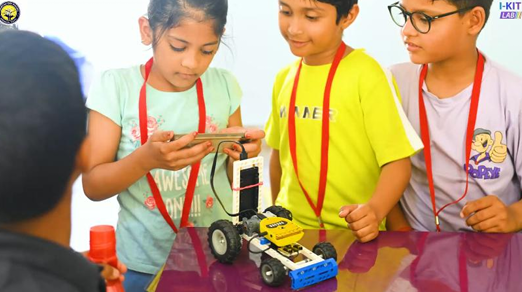
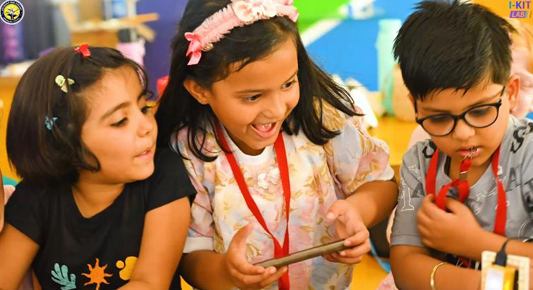
Learning Objectives
- Teach the basics of robotics, IoT (Internet of Things) and remote-control logic.
- Familiarize students with coding syntax through drag-and-drop logic blocks.
- Encourage real-time testing and debugging of their own robotic systems.
- Build logical thinking and cause-effect understanding in motion-based programming.
Student Engagement
- Each student or group wrote custom commands and uploaded them to the PeeCee Pocket.
- They used smartphones or PC interface to control the car’s movements and test different codes.
- As soon as the car responded, students showed excitement and eagerness to experiment further.
- Students competed in mini challenges like:
o Navigate around objects
o Park the car at a fixed point
o Create a movement pattern (e.g., square or circle path)
Mentor Involvement
- Instructors explained motor functions, speed control, and directional logic.
- Mentors encouraged students to think beyond just movement — like obstacle sensing and smart automation.
- Students were allowed to fail safely and correct their logic — an important part of design thinking.
Skills Developed
- Block-based coding & IoT concept awareness
- Hands-on electronics and hardware interfacing
- Debugging and logical reasoning
- Basic mechatronics understanding
- Confidence to build real-world tech
Excitement & Outcome
- Students were thrilled to see their robotic car move exactly as they programmed.
- It wasn’t just a toy — it was their own coded machine in motion, a huge confidence booster.
- Many students asked to build similar cars at home or suggested upgrades like sensors, lights, or voice commands.
- This activity truly embodied “Learning by Doing” — the core philosophy of STEAM and I-KIT Lab.
- Robo Soccer Race – Where Learning Meets Fun-
During the camp, students first understood the concept of the Robo Soccer Race — an engaging mix of robotics and football.
How to they learned?
Overview & Purpose of Robo Soccer Race:
Robo Soccer, also known as robotic soccer, is an exciting and educational activity where students design, build, and program robots to play soccer autonomously. It represents an introductory level in robotics, where learners engage with concepts like walking mechanisms, balance, control systems, and basic artificial intelligence.
This activity draws inspiration from global platforms like RoboCup (established in 1997) and FIRA (Federation of International Robo-soccer Association), which aim to push the boundaries of AI and robotics through competitive gameplay. Notably, RoboCup set a bold goal: to develop a fully autonomous robot soccer team capable of defeating human World Cup champions by 2050.
In India, interest in robo soccer is rapidly growing, with several institutions and organizations hosting such competitions. It not only brings learning to life but also builds a strong foundation in STEAM (Science, Technology, Engineering, Arts, and Mathematics) through fun and teamwork. - Purpose:
- To introduce students to the fundamentals of autonomous robotics.
- To encourage hands-on learning in mechanics, motion, and control.
- To develop problem-solving, coding, and teamwork skills.
- To ignite curiosity in AI, machine learning, and real-world applications of robotics.
- To prepare students for global tech challenges while having fun!
Education Standers Covered by Robo Soccer Race:
- Integration of Multiple Discipline Learnings Move robots with precision
- Hands- On Experience
- Move robots with precision
- Control objects like a mini football
- Integrate sensors and logic-based movement
- Enjoyable and creative learning Experience.

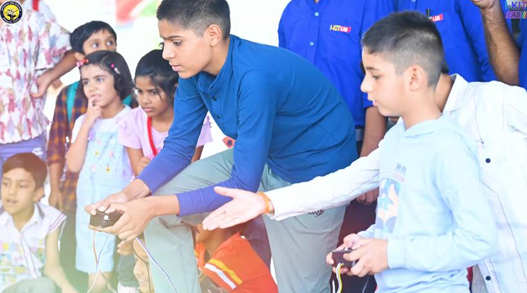
Scientific Principle of Robo Soccer Race:
Robo Soccer Race is a fun and learning-rich activity where students control their robots to play soccer. Behind this exciting race lies the use of mechanical, electrical, and scientific principles.
Key Scientific Concepts:
- Newton’s Laws of Motion
o Robots move when a force is applied (1st Law).
o Heavier robots need stronger motors to move (2nd Law).
o Kicking or bumping into another robot causes a reaction (3rd Law).
- Friction & Surface Grip
o Robots need proper tire grip to move smoothly and control direction on the ground.
- Balance and Center of Gravity
o A well-balanced robot stays stable while turning, dribbling, or pushing the ball.
- Electric Circuits & DPDT Switch
o A DPDT (Double Pole Double Throw) switch is used to control robot movement.
o It has 2 inputs and 4 outputs, allowing the robot to switch directions — forward, backward, left, or right.
o It works like two SPDT switches combined, and gives flexibility to change the robot’s motion during the
match.
o Each terminal can connect in two ways, allowing mode switching and smart control.
- Energy Conversion
o Electrical energy is converted into mechanical energy by motors, allowing movement and ball control.


Robo Soccer Showdown – A Lab Full of Cheers and Challenges:
Using I-KIT LAB’s components, club members built their own racing bots., students from all five clubs collaborated to design and build their own soccer robots. Whether it was Garud club’s engineering mechanics or Paramanu club’s focus on efficient energy control, each club brought its unique approach to the game.
The final robo soccer race turned the lab into a lively stadium, filled with cheers and laughter as students applied real world STEAM concepts in a high-energy, competitive environment.
Young Engineers in Action: The Robo Race Challenge-
At Navjeevan CBSE Academy, learning has taken an exciting turn with the introduction of Robo Race, powered by I KIT Lab. This unique activity brought science and fun together on the same track — quite literally! As part of the Summer Camp 2025, students didn’t just sit and learn about robots — they built them, tested them, raced them, and experienced the thrill of technology in action. Even the race track wasn’t ordinary — students themselves helped build it using sand and cones. It wasn’t smooth at all — it had bumps, turns, and tricky hurdles, just like a real racing challenge!
The racing arena became a playground of innovation where every child transformed into a young techie, navigating real obstacles with logic and creativity.
Robo Race was more than just a game — it was a hands-on learning experience that taught them the basics of robotics, motor control, and problem-solving in the most thrilling way. It sparked curiosity, confidence, and creativity — the perfect recipe for a future innovator!
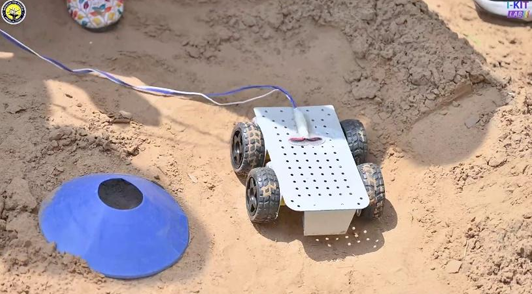
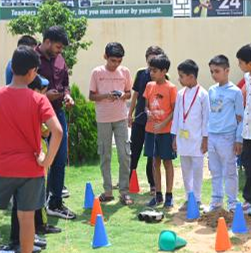
Overview & Purpose of Robo Race –
Robo Race is not just a racing competition it’s a creative, hands-on learning experience where students step into the shoes of young engineers. They design, build, and control their own robots to race on a custom-built track filled with obstacles, bumps, and tight curves.
The track, built by the students themselves using sand and cones, was designed to be challenging and realistic helping them learn how to tackle real-world engineering problems like navigation, balance, and speed control.
Education Standers Covered by Robo Race:
- Integration of Multiple Discipline Learnings Move robots with precision
- Hands- On Experience
- Move robots with precision
- Control objects like a mini football
- Integrate sensors and logic-based movement
- Enjoyable and creative learning Experience
Scientific Principle of Robo Race:
Robo Soccer Race is a fun and learning-rich activity where students control their robots to play soccer. Behind this exciting race lies the use of mechanical, electrical, and scientific principles.
Key Scientific Concepts:
- Newton’s Laws of Motion
o Robots move when a force is applied (1st Law).
o Heavier robots need stronger motors to move (2nd Law).
o Kicking or bumping into another robot causes a reaction (3rd Law).
- Friction & Surface Grip
o Robots need proper tire grip to move smoothly and control direction on the ground.
- Balance and Center of Gravity
o A well-balanced robot stays stable while turning, dribbling, or pushing the ball.
- Electric Circuits & DPDT Switch
o A DPDT (Double Pole Double Throw) switch is used to control robot movement.
o It has 2 inputs and 4 outputs, allowing the robot to switch directions — forward, backward, left, or right.
o It works like two SPDT switches combined, and gives flexibility to change the robot’s motion during the
match.
o Each terminal can connect in two ways, allowing mode switching and smart control.
- Energy Conversion
o Electrical energy is converted into mechanical energy by motors, allowing movement and ball control.
- Robo Race Mania – Speed, Skills & Screams of Joy –
- Powered by I-KIT LAB’s advanced components, the Robo Race turned into an electrifying showdown of creativity,
collaboration, and competition. Students from all five STEAM clubs came together to build their racing bots —
each team adding its unique flavor to the challenge.

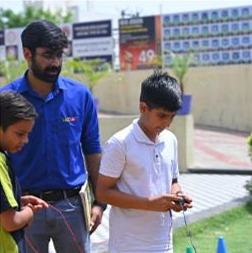
- From Garud Club’s mastery in engineering mechanics to Paramanu Club’s smart control of energy efficiency, every group applied their specific skills and knowledge while designing their robots. This wasn’t just a race — it was a clash of innovation and teamwork!
- As the final race began, the robotics lab transformed into a mini stadium, echoing with cheers, excitement, and the thrill of competition. Robots zoomed, turned, and tackled hurdles while students applied real-world STEAM concepts in one of the most fun and engaging ways imaginable.
- This event truly showcased how learning becomes magical when science meets imagination on a track full of challenges!
- Blast Off with Brilliance – The Hydro Rocket Challenge-
This thrilling, sky-reaching activity was more than just a rocket launch — it was a powerful blend of science, excitement, and teamwork. Students designed and launched their own water-powered rockets, experiencing firsthand the magic of pressure, force, and aerodynamics.
With every countdown and splash, young minds were inspired to dive deeper into the wonders of math, physics, and engineering. The sky wasn’t the limit — it became their launchpad for imagination, creativity, and scientific thinking.
The Hydro Rocket Challenge didn’t just send rockets flying — it sent dreams soaring, igniting curiosity in every young innovator who took part.
Overview & Purpose:
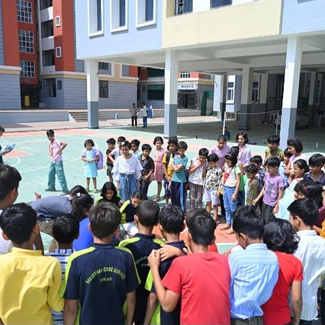
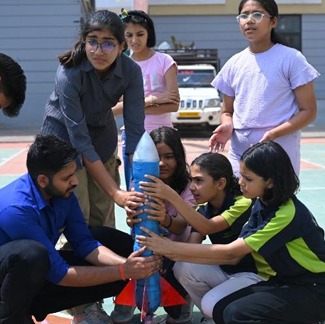
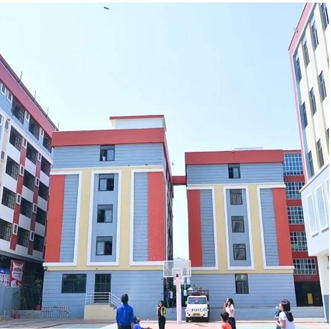
Hydro rocket is a water rocket, it is basically an upside-down fizzy drinks bottle, which has had a ‘nose’ cone and some fins added.
The Hydro Rocket activity is a hands-on STEAM (Science, Technology, Engineering, Arts, and Mathematics) experience designed to spark curiosity and engage students in the principles of physics and engineering. Using water pressure to launch rockets into the sky, students explore key scientific concepts like gravity, force, pressure, and aerodynamics in a fun and interactive way.
Purpose:
- To introduce students to the fundamentals of Newton’s Laws of Motion and aerodynamic forces.
- To encourage creative thinking and problem-solving through rocket design.
- To foster teamwork, experimentation, and curiosity.
- To demonstrate how science can be exciting, visual, and practical.
Educational Standards Covered by Hydro Rocket Activity
Science –
- Newton’s Laws of Motion: 1st Law – A rocket will remain on the launch pad until an unbalanced force is exerted,
propelling the rocket upward.
2nd Law – The amount of force depends upon how much air is pumped inside the rocket. You can increase the force further
by adding a small amount of water, which increases the mass expelled by the air pressure in the rocket .
3rd Law – Finally, the action force of the air (and water) as it rushes out of the nozzle creates an equal and opposite reaction
force propelling the rocket upward.
Understanding how action and reaction forces launch the rocket.
Air Pressure and Water Thrust: Learning how compressed air forces water out, creating thrust.
| concept | Explanation |
| Air Compression | More air pumped = more pressure built inside the bottle. |
| Water as Propellant | More air pumped = more pressure built inside the bottle. |
| Pressure + Thrust = Lift-off | Together they create the force needed to launch the rocket. |
- Gravity and Aerodynamics: Students explored how gravity pulls us down and how aerodynamic design helps
rockets soar, turning complex physics into hands-on fun and discovery. - States of Matter: Understanding how air and water interact during compression and release.
Technology
- Using air pressure tools and launch pad systems for hydro rocket.
- Learning safe handling of pressurized systems.
Engineering
- Design Thinking: Building and testing the rocket for flight stability and height.
- Problem Solving: Modifying design for better performance and learning from failed launches.
- Measurement & Optimization: Measuring angles, pressure, and distance for optimal launch.
Arts
- Creative Rocket Design: Students paint and personalize their rockets.
- Promotes visual learning and presentation of models.
Mathematics
- Angle Calculations: Calculating trigonometry angles. Calculate the distance from launch pad to the device measuring angle of hydro rocket
- Distance Measurement: Distance depends on: Range = (Initial Velocity² × sin(2 × Angle)) / Gravity
- Data Collection & Graphing: Use a protractor or angle scale on the launch stand. Mark 30°, 45°, and 60°.
Scientific Principle of a Hydro Rocket:
- The Hydro Rocket operates based on Newton’s Third Law of Motion:
“For every action, there is an equal and opposite reaction.” - When water is forced out of the rocket’s nozzle under pressure (created by pumping air), it pushes the rocket in
the opposite direction — upwards into the sky.
Hydro Rocket in Action – Blasting Curiosity into the Sky:
Then, across all clubs — with Earth club focusing on eco-safe materials, Garud club optimizing the aerodynamic design, and Paramanu club exploring pressure-energy innovation — students built their own rockets using cold drink bottles, nose cone, and fins.
The entire school gathered on the ground for the final launch. Rockets soared high, applause echoed, and the faces of students, teachers, and the principal lit up in awe. It was a moment of pure scientific joy and curiosity.
Why This Camp Was Special
More than just a tech workshop, this camp was a journey of discovery & future, where children were encouraged to think, build, test, and improve their skills. Thanks to the structured approach and hands-on mentorship from I-Kit Lab’s instructors, mentor and SMEs, students gained real confidence and exposure to future-ready skills.
The camp also gave every student the opportunity to shine through project presentations and live demonstrations, showcasing talent from every club — Charak, Garud, Humpi, Earth, and Paramanu.
A Word from the Organizers…
Mr. Sanjeev Soni, Business Development Manager at I-KIT Lab, shares his vision:
In today’s rapidly evolving world, shaped profoundly by creativity, technology, automation, and innovation, preparing students to simply keep pace is no longer enough. To truly excel, they must be equipped with skills that go beyond traditional learning. This is where STEAM education—integrated with Robotics and AI labs—becomes indispensable.
At I-KIT STEAM Lab, we are committed to nurturing the next generation of thinkers and doers. Our programs empower students to become future scientists, innovators, entrepreneurs, creators, tech leaders, engineers, designers, problem solvers, and changemakers. Through immersive hands-on learning and real-world exploration, STEAM education transforms potential into excellence.
STEAM combined with Robotics and AI is not just a mode of education—it is a launchpad. A launchpad from which young minds take flight to shape the future.
Summer Camp Learning Highlights Report – Navjeevan CBSE Academy (Sikar)
A brief report showcasing the hands-on learning, innovation, and creativity fostered through STEAM activities conducted during the Summer Camp (May’ 2025).
- School Name – Navjeevan CBSE Academy
- Submitted to – Lokesh Sir
- Name of School Coordinator – Lokesh Sir
- Submitted by – PADMANBH Innovations
- Duration – May’2025 (summer camp)
- Group Name – Beginner
- Classes – 3rd, 4th, 5th, 6th, 7th, 8th and 9th
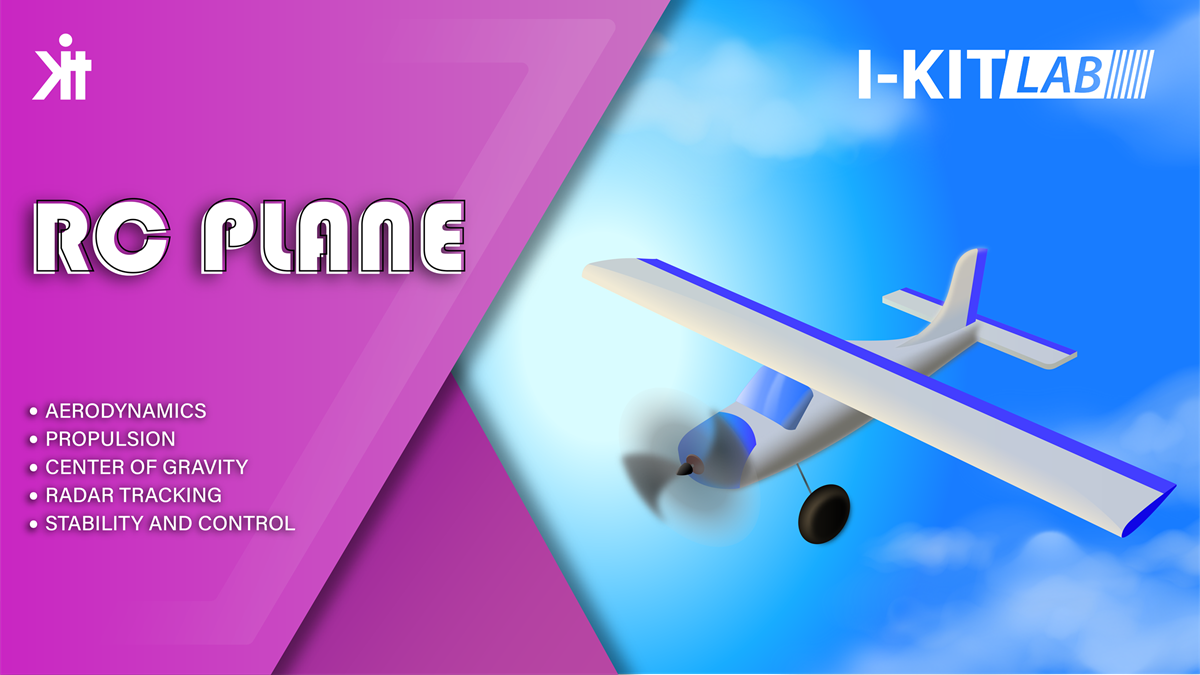

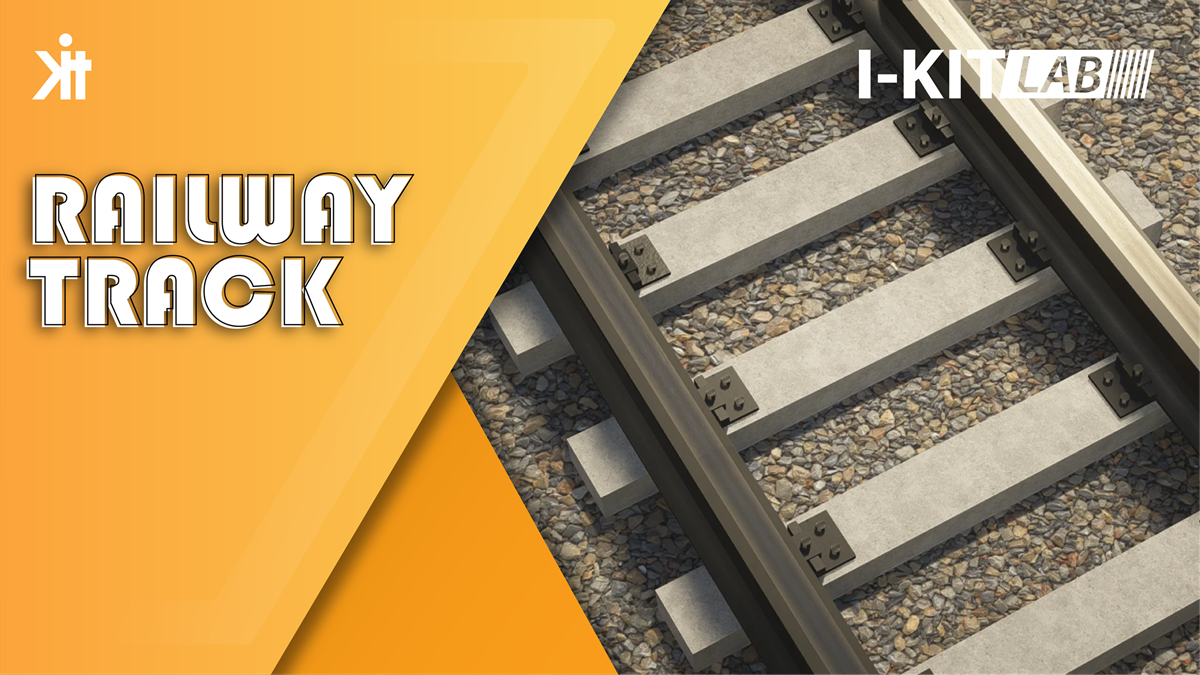


Responses